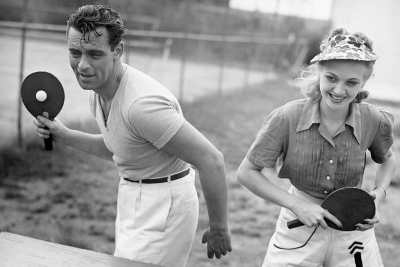Who Invented the Computer? Ralph Baer and Magnavox Odyssey
Who Invented the Computer? This is the thirty-eighth installment in our ongoing series.

An increasingly common feature of our modern world is the home gaming console. According to a 2022 survey, more than 53 percent of U.S. households own at least one, with the majority of respondents reporting owning somewhere between one and four consoles. A much smaller group of players who call themselves “super gamers,” report owning seven or more gaming consoles.
While gaming is an increasingly popular activity among all age groups, few know the origin of those compact consoles that provide hours of fun and frustration to their users. The gaming console story begins almost 60 years ago with Ralph Baer — who was born in 1922 and died in 2014 — a self-taught inventor and engineer whose Jewish family fled from Germany at the onset of World War II.
A radio service technician and graduate of the National Radio Institute in Washington, D.C., Baer was drafted into military service for his new homeland in 1943. After serving as an Army intelligence officer during World War II, Baer earned a bachelor of science degree in Television Engineering from the American Television Institute of technology in Chicago.
A Game in a Box

In 1966, while working for Sanders Associates in New Hampshire, Baer constructed a wooden box and filled it with electronic components that sent a signal to a television set. The signals appearing on the screen consisted of two small white rectangular lines, and a smaller oblong shape.
By rotating knobs on attached controllers, players could move the rectangular lines vertically. Working together, the players could volley the smaller oblong shape between them. Baer called the rectangular shapes “paddles” and the smaller shape a “ball” and named his creation “Ping Pong."
Watching a ball bounce back and forth between paddles wasn’t much fun, however, so Baer attached a small button on each controller that, when pressed, enabled a player to “put a little English” on the ball, sending it spinning off at an angle. Just like the real-life version of the game, TV ping pong now required skill. The game was a hit with fellow employees. Almost immediately, some started declaring that the game was “kind of like tennis and even hockey.”
For the next three years, Baer and two colleagues, Bill Harrison and Bill Rusch worked to improve the prototype console, eventually selling their seventh version, the “Brown Box” in January 1971 to the electronics company Magnavox, a large manufacturer of television sets.
The company expanded the Brown Box into a dedicated platform and named it the “Magnavox Odyssey.” An unusual device for its time, the Odyssey had a plastic housing that resembled a shuttle from Star Trek and the controllers looked similar to small slide projectors.
From Soccer to Target Practice

A very simple platform, the Odyssey functioned by illuminating three white lights (two paddles and a ball) onto the television screen. Various polymer foil overlays placed onto the screen and held there by static electricity generated by the TV’s cathode ray tube, enabled players to play other games like tennis, football, soccer, volleyball, hockey and even a haunted house game.
Games for the system were in the form of a thick card with printed circuits. Most games used just one card that users inserted into the console, but a handful games required multiple cards to play.
The sport games were all essentially ping pong with different overlays that included images of hockey, volleyball, and soccer — players simply used the paddles to move the ball back and forth while imagining they were playing the different games.
One game players particularly enjoyed was “Shooting Gallery.” An overlay featuring arcade targets would be placed on the TV, and one player would use the controller to move a light ball to various targets while the other player used a light gun (that looked amazingly like a real pump-action shotgun) to hit the target. The light gun, manufactured by the Nintendo Corporation in Japan, even had a slight recoil sensation.
Unlucky Number 11

Unlike today, buying an Odyssey required effort: You either visited a local Magnavox dealer to purchase it or waited until a door-to-door salesman knocked. Surprisingly, the company’s marketing plan only included two TV commercials and those only ran for a brief time. In spite of limited marketing efforts, Magnavox sold more than 350,000 copies of the Odyssey for $99.95 before being discontinued in 1975.
While the Odyssey was the first home gaming console, there were a number of reasons why it failed to really take off. Design problems included the bulkiness of the controllers, as many people weren’t sure how to hold them while playing.
Wires were also a problem. The one connecting the console to the TV was too long, and often got tangled, while the cords connecting the controllers to the console were uncomfortably short.
A major issue with the Odyssey was that many of the games required accessories that were sold separately, including the light gun, numerous foil overlays, and even poker chips and a board for playing roulette. To top things off, the 35-page user’s manual was unclear in many instances.
The most frustrating aspect of the Odyssey had to do with the number of games. The company advertised “28 different games,” but for reasons lost to time game number 11 was never included, even after customers complained.
By today’s standards, the Magnavox Odyssey was mind-numbingly simple, but it paved the way to more than 1,000 different consoles and a global market predicted to exceed $51 billion by 2027. Not bad for a phenomenon that began with Ralph Baer's three small lights on a television screen.





